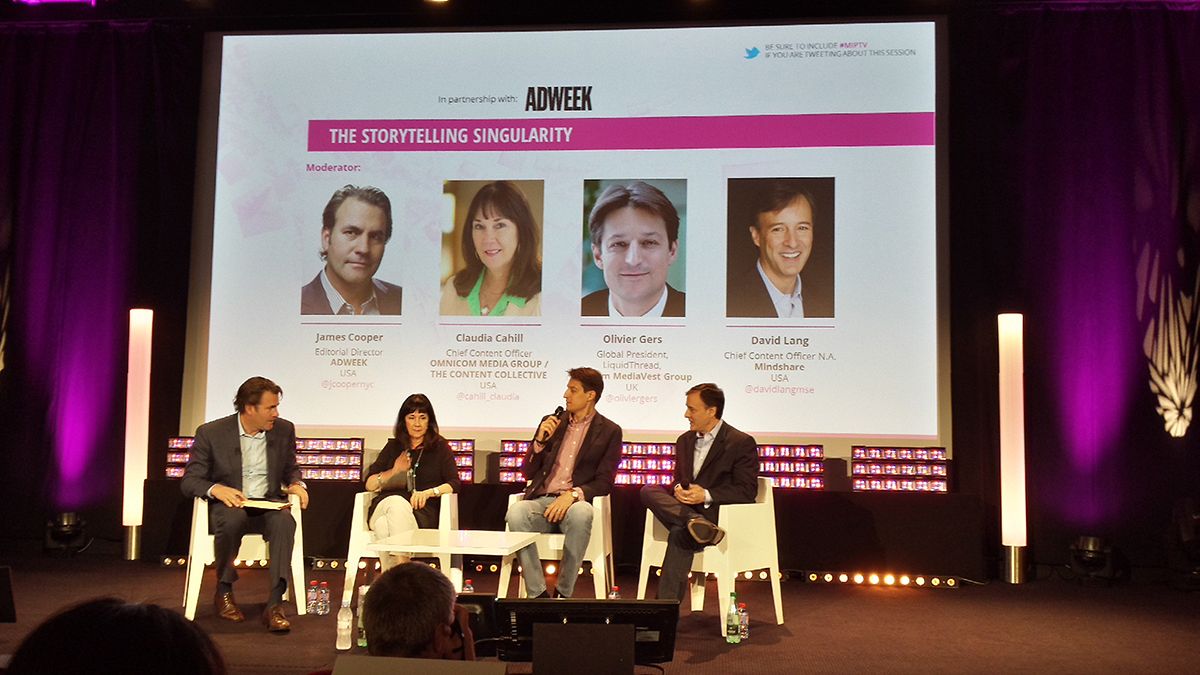The traditional 30-second TV ad, for so long the king of formats in the advertising industry, faces increasing competition from different, more subtle formats. In the words of Havas chairman and CEO Yannick Bolloré “the 30-second ad is now longer enough.”
Speaking during a keynote at MIPTV in Cannes, Bolloré told the audience these ads “still matter” but they are not enough to catch people’s attention. The audience, especially younger generations, are particularly wary of anything in which the brand appears too obvious. “They tune out” says Olivier Gers, president of LiquidThread, using his children as an example during a panel discussion earlier that day.
The new kid on the block is – buzzword alert – “content.” For Gers, “content goes much further than a classic 30 seconds ad, especially with younger generations.” But, he notes, “there is space for all.”
While the panelists could not agree on a single definition of content, “it’s a word which means a lot of different things” Bolloré said, David Lang, Chief Content Officer at Mindshare gave his to the audience:
“Content tells a consumer what you stand for, advertising tells a consumer what you want them to buy” @davidlangMSE#MIPTV@Adweek
— MIP Markets (@mip) 14 Avril 2015
As an example, Lang showed a 1:46 clip featuring NBA all-star Stephen Curry titled “Game Changer.” Produced for a deodorant brand, whose logo only appears at the very last seconds, the video reached more than 1,5 million views.
Hosted on the brand’s Youtube channel, it is also a starting point for the viewers to other videos of the brand, some of which display more prominently the visuals and name of the deodorant.
Havas too produces content for brands. Its BETC agency produced the new safety measures video for Air France, which puts a twist on dull pre-flight announcements with French chic and humour. Launched mid-March, the video got 285,000 hits in a month.
It’s not always easy to convince brands to invest in content. Claudia Cahill of OMD says parts of the agency’s mission is “to educate clients on the role of the brand.”
But it can pay off, as Cahill shows a clip of the content strategy devised for Pepsi around the Superbowl halftime show, an event the soft drink brand sponsored. Using among other things, movie stars and relevant popular Youtube platforms, the campaign surrounding the half-time show received more views combined than the actual show on the football field.
A lot of data and science go into producing content, the panel agreed, as it allows the delivery of specific messages to specific audiences. Yet, as Gers put it: “what we do is find a balance between science, data and creativity. But data doesn’t engage customers, the story does.” So the work of the creative minds in the agencies is safe for now, and branded content has a whole life ahead of him.
